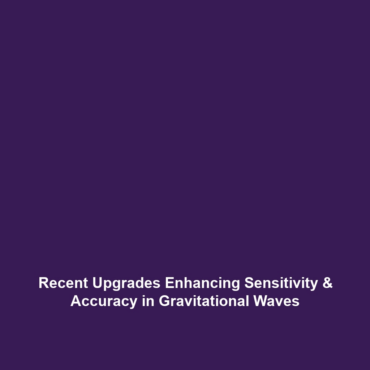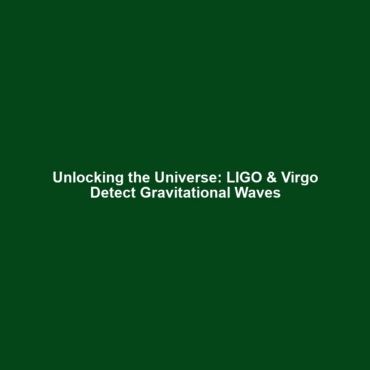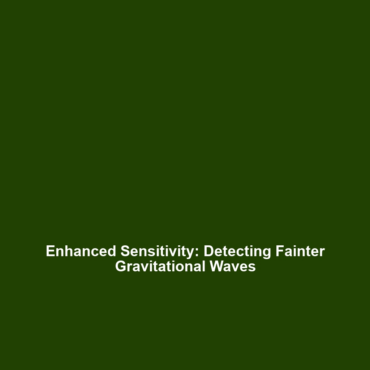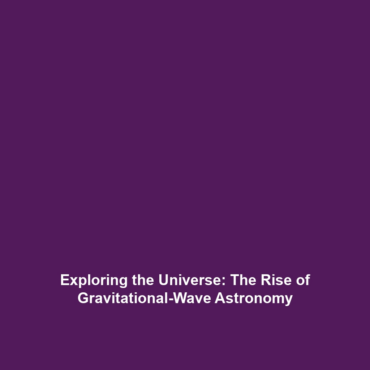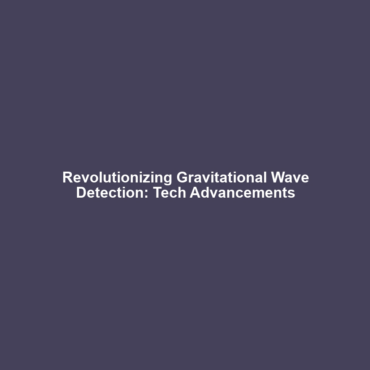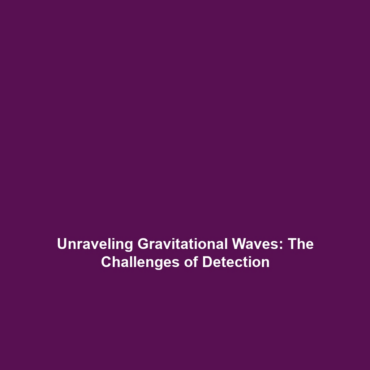Recent Upgrades to Improve Sensitivity and Accuracy in Gravitational Waves
In the world of astrological research, the detection of gravitational waves has revolutionized our understanding of the universe. Recent upgrades to improve sensitivity and accuracy of gravitational wave observatories have become critical in enhancing our ability to detect these elusive phenomena. These advancements are essential as the scientific community strives to uncover the mysteries of the cosmos, from understanding black holes to confirming theories of general relativity. In this article, we will delve into how these upgrades are reshaping the field of gravitational wave astronomy.
Key Concepts
Recent upgrades in gravitational wave detectors primarily involve advancements in technology and methodology aimed at increasing their sensitivity and accuracy. Some key concepts include:
- Interferometry: Utilizing laser interferometry to measure minuscule changes in distances, which are indicative of passing gravitational waves.
- Sensitivity Enhancements: Implementation of advanced damping and isolation techniques to minimize environmental noise and improve the detectors’ ability to spot weak signals.
- Data Processing Innovations: Incorporating machine learning algorithms to filter and analyze data more effectively, allowing for faster identification and characterization of gravitational wave events.
Applications and Real-World Uses
The recent upgrades to improve sensitivity and accuracy in gravitational wave detection have several significant applications:
- Astrophysical Research: Enhanced detection allows researchers to study the collisions of black holes and neutron stars with greater precision.
- Cosmology: Better sensitivity can help in measuring the expansion rate of the universe by observing phenomena related to gravitational waves.
- Testing General Relativity: Improved accuracy aids scientists in testing the predictions of general relativity under extreme conditions.
Current Challenges
Despite significant improvements in sensitivity and accuracy, several challenges persist in the study of gravitational waves:
- Environmental noise such as seismic activity can still obscure signals.
- Complex data processing requires substantial computational power and resources.
- Funding limitations restrict the expansion and upgrading of existing facilities.
Future Research and Innovations
Looking ahead, ongoing research is crucial for future innovations in the field of gravitational waves:
- Next-Generation Detectors: Development of more sophisticated observatories like the Einstein Telescope is underway.
- Quantum Technology: Exploring the use of quantum sensors for even higher sensitivity.
- Collaboration Networks: Global collaborations are forming to share data and resources, broadening the scope of discoveries.
Conclusion
In summary, recent upgrades to improve sensitivity and accuracy are integral to advancing the study of gravitational waves. These refinements not only enhance our observational capabilities but also pave the way for significant scientific breakthroughs. As researchers continue to tackle the challenges and explore future innovations, the potential for new discoveries in the realm of cosmology remains vast. For more information on gravitational waves and related topics, please explore our related articles.
